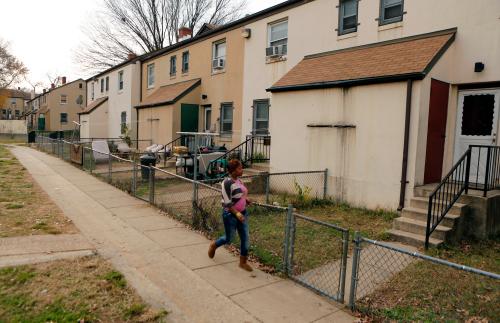Following the failure of national immigration reform in 2006 and 2007, local leaders in many areas with fast-growing immigrant populations stepped in to address the issue, capturing media and public attention with scores of proposed immigration-related ordinances. A case study of the local, regional, and, ultimately, national factors that led Prince William County—an outer suburb of Washington, DC emblematic of the trend—to adopt new policies towards unauthorized immigrants finds:
- Prince William County, VA has experienced rapid population growth and dynamic change. The county’s total population more than doubled between 1980 and 2006, while its immigrant population swelled to more than 14 times its 1980 size. Between 2000 and 2006, Prince William’s Hispanic population tripled in size, making it one of the nation’s top counties for Latino growth.
- Housing and jobs drove population growth in Prince William County, drawing newcomers from around the region and the nation, including immigrants. Relatively stable during the 1990s, home prices in the Washington region soared from 2000 to 2005; job growth and decentralization made farther-flung suburbs like Prince William County more affordable than those in the inner core.
- Long-time residents—particularly in older neighborhoods where many Hispanic newcomers concentrated—perceived a decline in their quality of life and feared a drop in property values due to visible signs of neglect and overcrowding. Simultaneously, rapid population growth countywide resulted in challenges typical to fast-growing communities: traffic congestion, crowded schools, and heavy demand on public services.
- Community leaders and residents successfully organized to pressure county government to crack down on illegal immigration. Passed without a public hearing or sufficient investigation of the potential consequences, the new legislation ordered police to check residency status of lawbreakers and enter into a cooperative agreement with Immigration and Customs Enforcement. It also mandated the denial of business licenses and certain county social services to unauthorized immigrants.
- In addition to swift demographic change, several other factors contributed to Prince William County’s role at the forefront of a movement toward restrictionist policymaking on immigration. Federal immigration debates, an unprepared local government, lack of service infrastructure for immigrants, heightened political pressure due to local election campaigning, and media attention contributed to the environment that led to the groundbreaking legislation.
Changes in public policy in Prince William County have come at a time of peak interest in immigrants in communities across the United States. They have also come at a moment of financial crisis and economic anxiety. Municipalities across the country confront tough choices in addressing the challenges they face as they undergo rapid change due to immigration.


